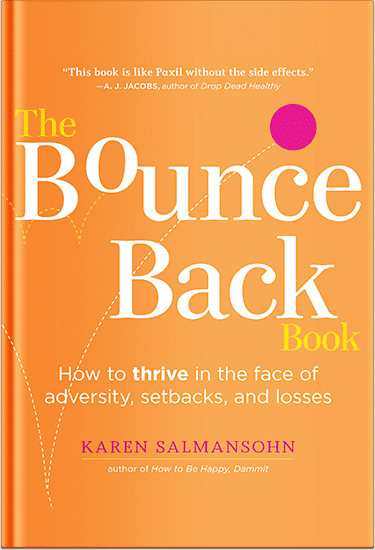 The importance of oxygen regulators cannot be overstated in modern healthcare, most especially in hospitals where the precise control of oxygen therapy is important.
The importance of oxygen regulators cannot be overstated in modern healthcare, most especially in hospitals where the precise control of oxygen therapy is important.
These devices are specifically designed for the administration of medical oxygen to regulate and control the gas flow to the patient so that enough O2 is administered at a safe level.
I’m sharing this guide about benefits of using oxygen regulators in hospitals because I’m a bestselling wellness author with about 2 million books sold globally.
Plus I founded the therapist recommended self-paced online program called The Anxiety Cure Course.
I am committed to helping people to live their happiest and healthiest lives.
Benefits of Using Oxygen Regulators in Hospitals
Greater Accuracy
A main benefit of medical oxygen regulator is, that they provide specific amounts of oxygen to patients. Hospitals need exact dosing, if too much or little oxygen is given it can lead to serious health outcomes.
Flow meters on oxygen regulators enable healthcare providers to visualize and adjust the right flow rate of the delivered oxygen. Regulators assist by providing a steady and well-regulated supply of oxygen reducing varying oxygen saturation levels in patients, aiding the overall treatment outcome.
Improved Patient Safety
Safety issues are always a top priority in medical facilities, and the role of oxygen regulators provides an additional layer of safety for patients. These instruments are equipped with safety features to prevent the possible adverse consequences of oxygen therapy. It protects against over pressurization which can cause equipment failure or accidents.
In addition, regulators have a pressure gauge built to display the amount of oxygen in the cylinder and ensure it is not exposed to sub- or over-pressure. Utilizing the right level of pressure and flow ensures that there are not too high or low pressures being used. Oxygen regulators help prevent complications, which can promote safety in healthcare for patients.
More Efficient Oxygen Control
Oxygen regulators are responsible for the effective utilization of oxygen resources in hospitals. When oxygen flow is regulated, these devices can be customized to the needs of individual patients or conditions, which reduces wastage and ensures resources, are used effectively.
In hospitals, where oxygen cylinders are frequently used, using a regulator saves more than 90% gas and helps to increase usage hours per cylinder. It reduces higher costs and ensures that oxygen can always be accessed by patients when they need it.
With a medical oxygen regulator, it is easier to adjust oxygen flow so that healthcare professionals promptly respond and adapt the airflow per patient need, streamlining general workflow productivity.
Diverse Applications of Health Care Support
These life-saving oxygen regulators can be used for many medical applications. Within hospitals, they have several therapeutic uses including emergency care surgical procedures and routine oxygen therapy. For example, in emergency cases using a regulator provides direct oxygen therefore serving immediate stabilization of patients suffering life-threatening respiratory distress.
In surgery, accurate administration of oxygen is necessary to keep the patient’s blood sufficiently with oxygen for a successful outcome. This adaptability makes the oxygen regulator an efficient instrument for providing universal care in different medical scenarios.
Support for Portable Oxygen
Oxygen regulators offer the convenience of portable oxygen supplies. A large number of patients necessitate oxygen supplementation when ambulating, whether within the hospital or during transitions to other providers.
Portable oxygen regulators are designed to be compact and lightweight. It enables patients to receive oxygen therapy without being connected to stationary equipment. Regulators enhance the patient experience by allowing for portable oxygen use and increased overall comfortability.
Increased Visibility
Inpatient care, improved Assessment, and controllability of oxygen regulators are essential. Advanced regulators have modern features like digital displays and alarms that alert the operator when an oxygen flow rate drops or falls below a desired level. These tracking tools permit healthcare employees to check oxygen distribution in real time and readjust as needed.
Regulators include an alarm to notify staff of any variation or issue, such as the pressure being low or a disruption in flow that needs intervention and correction. Patient care and treatment outcomes are improved by the high level of monitoring and control over how oxygen therapy is delivered.
Stay Calm in Tough Times
Explore my bestselling and therapist recommended audio and video program: The Anxiety Cure Course.
P.S. Before you zip off to your next Internet pit stop, check out these 2 game changers below - that could dramatically upscale your life.
1. Check Out My Book On Enjoying A Well-Lived Life: It’s called "Your To Die For Life: How to Maximize Joy and Minimize Regret Before Your Time Runs Out." Think of it as your life’s manual to cranking up the volume on joy, meaning, and connection. Learn more here.
2. Life Review Therapy - What if you could get a clear picture of where you are versus where you want to be, and find out exactly why you’re not there yet? That’s what Life Review Therapy is all about.. If you’re serious about transforming your life, let’s talk. Book a FREE consult call here.
Think happier. Think calmer.
Think about subscribing for free weekly tools here.
No SPAM, ever! Read the Privacy Policy for more information.
One last step!
Please go to your inbox and click the confirmation link we just emailed you so you can start to get your free weekly NotSalmon Happiness Tools! Plus, you’ll immediately receive a chunklette of Karen’s bestselling Bounce Back Book!


 The importance of oxygen regulators cannot be overstated in modern healthcare, most especially in hospitals where the precise control of oxygen therapy is important.
The importance of oxygen regulators cannot be overstated in modern healthcare, most especially in hospitals where the precise control of oxygen therapy is important.